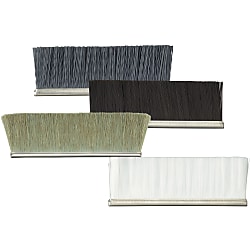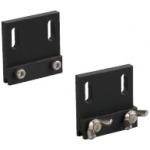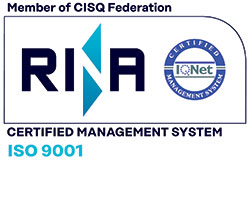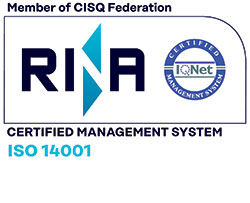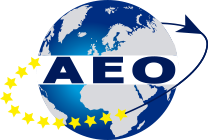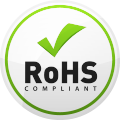Channel Brush
(i)Remark
- Please check the content on our website as the PDF does not contain the most up-to-date information.
Part Number
Once your search is narrowed to one product,
the corresponding part number is displayed here.
- Drawing / Specifications
- 3D Preview 3D preview is available after complete configuration
- Part Numbers
- More Information
- Catalog

| L (Unit: mm) | Tolerance |
| Up to 100 | ±1.5 |
| 101 to 400 | ±2.0 |
| 401 to 800 | ±2.5 |
| Type | [M]Brush Filament | [M]Channel | Color |
| BRUSN | Nylon 6 | EN 1.4301 Equiv. | White |
| BRUSE | Conductive Fiber Thunderon (Copper Alloy) | Silver Green | |
| BRUSM | Conductive Nylon Mono-Eight | Black | |
| BRUSK | Nylon with Abrasive Grain | Gray |
[!]Mono-Eight is a registered trademark of TORAY MONOFILAMENT Co., Ltd.
Specification Table
| Part Number | — | No. | — | H | — | L |
| BRUSN3 | — | 0.2 | — | 30 | — | 150 |
| Part Number | No. Selection | H 5 mm Increments | L 5 mm Increments | h | d | T Dimension Tolerance | |
| Type | T | ||||||
| BRUSN | 3 | 0.2 | 10 to 50 | 30 to 800 | 3.5 | 0.21 | -0.1 to +0.9 |
| 0.3 | 0.295 | ||||||
| 5 | 0.2 | 10 to 50 | 5.5 | 0.21 | -0.3 to +0.7 | ||
| 0.3 | 0.295 | ||||||
| 0.5 | 10 to 50 | 0.535 | |||||
| BRUSE | 3 | 0.075 | 10 to 30 | 3.5 | 0.075 | -0.3 to +0.4 | |
| BRUSM | 3 | 0.3 | 10 to 50 | 3.5 | 0.3 | 0 to +1.0 | |
| 5 | 5.5 | -0.4 to +0.6 | |||||
| BRUSK | 5 | 0.6 | 10 to 50 | 5.5 | 0.6 | -0.4 to +0.6 | |
Product Feature Details
■Features of Channel Brush
There are 2 techniques to manufacture brush: "Implanted Roll Brush" whereby the filaments are planted as in the case of toothbrush and "Channel Brush" whereby the filaments arranged on a straight line are clamped/fixed.
The advantageous point of the "Implanted Roll Brush" technique is that clogging is unlikely to occur. The advantageous point of the "Channel Brush" technique is that a large volume of filament can be implanted and are little likely to fall out.
■Channel Brushes / Channel Roll Brush Mfg. Method

(1) Hold the filaments within the channel with a core wire
(2) Crimp the channel from both sides
welded-on
with the shaft
Product Performance Information / Test Information
■About Filament Materials
| Filament Material | Features | ||||||||
|---|---|---|---|---|---|---|---|---|---|
| Nylon 6 | Filament Material excellent in wear resistance, fatigue resistance, and resiliency characteristics and suitable for long term operation. Suitable for food processing. Maximum temp. limit for the filaments is 100°C. Care should be taken since it dissolves in strong hydrochloric acid, sulfuric acid, formic acid, and phenolic acid. | ||||||||
| Thunderon | The organic conductive fiber made by copper sulfide chemically bonded to acrylic fiber has static neutralizing functionality. Flexible and has excellent wear resistant characteristics in spite of its low specific density. (!) Thunderon is a registered trademark of Nihon Sanmo Dyeing Co., Ltd. | ||||||||
| Conductive Nylon Mono-Eight | Carbon is compounded with nylon so that it is antistatic even if directly contacting with workpiece. Conform to the use conditions for Nylon 6. Has thicker filament diameter than Thunderon. Resilient filament is usable for anti-static measures. (!) Mono-Eight is a registered trademark of TORAY MONOFILAMENT Co., Ltd. | ||||||||
| Nylon with Abrasive Grain | Abrasive particles are compounded with nylon so that it is more resistant to breakage and burrs than Nylon 6. Uses Alumina #320. | ||||||||
■Filament Diameter of Channel Brush (for 30 mm)
| Channel Width | Width 5 mm | Width 3 mm | |||||||
|---|---|---|---|---|---|---|---|---|---|
| Filament Material | Nylon 6 | Conductive Nylon Mono-Eight | Nylon with Abrasive Grain | Nylon 6 | Thunderon | Conductive Nylon Mono-Eight | |||
| Filament Dia. | 0.2 | 0.3 | 0.5 | 0.3 | 0.6 | 0.2 | 0.3 | 0.075 | 0.3 |
| Photo |  |  |  |  |  |  |  |  |  |
| Channel Brush | ○ | ○ | ○ | ○ | ○ | ○ | ○ | ○ | ○ |
| Roll Brush | — | ○ | ○ | — | — | ○ | — | — | — |
| Filament Material | Filament Diameter | Features | |||||
|---|---|---|---|---|---|---|---|
| Nylon 6 | 0.2 | Feel of Tooth Brush (Normal) | |||||
| 0.3 | Feel of Bathtub Brush. Harder than Tooth Brush (Hard) | ||||||
| 0.5 | Hard. Feel of Deck Brush | ||||||
| Thunderon | 0.075 | Diameter and Feel of Average Human Hair. | |||||
| Conductive Nylon Mono-Eight | 0.3 | Feel of Bathtub Brush. Harder than Tooth Brush (Hard) | |||||
| Nylon with Abrasive Grain | 0.6 | Harder and more resilient than Nylon 6, 0.5. | |||||
Product Performance Information / Test Information
■Elasticity Test of Channel Brush
 Test Conditions Loads are measured while the filament tip (y0 to 1 mm) is pushed in X direction to cause the leaning of 1, 3, 5, and 10 mm. These are measured values and are reference values. Not guaranteed values. | See the test conditions on the left.
|  | |||||||||||||||||||||||||||||||||||||||||||||||||||||||||||||||||||||||||||||||||||||||||||||||||||||||||||||||||||||||||||||||||||||||||||||||||||||||||||||||||||||
Product Feature Details
(1) Brush's service life will vary depending on usage conditions and frequency. Pulling off some filaments may cause entire falling-out.
(2) Maximum temp. limit for the filaments is 100°C. The filaments will melt and fall off at above that.
(3) Nylon 6 dissolves in strong hydrochloric acid, sulfuric acid, formic acid, and phenolic acid.
(4) Brush press contact length should be 2 mm or less. Do not press further than necessary.
(5) Do not bend the channel brush.
(6) The Channel Brush is warped/bent by ±2 mm per L100 mm.
(7) The warranty will be void once the brush part is cut.
Also, if the cut edge is left as it is, the filament material may fall out.
(8) When using the conductive fiber Thunderon vertically upward (filament tips on the top), it will spread more easily than other materials.
(1) Beware of the deformation of the filaments in storage. If the brush is left in contact with workpiece while in storage, the filaments may be deformed permanently.
Additionally, avoid filament tips from contacts when storing the brush by itself.
(2) Dry before storage.
(3) Remove any foreign objects from the brush.
(4) Do not store in high temp. environment or near fire.
Part Number:
- In order to open the 3D preview, the part number must be fixed.
3D preview is not available, because the part number has not yet been determined.
| Part Number | Minimum order quantity | Volume Discount | RoHS | Brush Filament Material | T | Wire Dia. No. (d dimension) | H (mm) | L (mm) | No. Selection | |
|---|---|---|---|---|---|---|---|---|---|---|
| 1 | 9 Days | 10 | Conductive Fiber Thunderon(r) (Copper Alloy) | 3 | 0.075(0.075) | 10 ~ 30 | 30 ~ 800 | 0.075 | ||
| 1 | 9 Days | 10 | Nylon with Abrasive Grain | 5 | 0.6(0.6) | 10 ~ 50 | 30 ~ 800 | 0.6 | ||
| 1 | 9 Days | 10 | Conductive Nylon Mono-Eight(r) | 3 | 0.3(0.3) | 10 ~ 50 | 30 ~ 800 | 0.3 | ||
| 1 | 9 Days | 10 | Conductive Nylon Mono-Eight(r) | 5 | 0.3(0.3) | 10 ~ 50 | 30 ~ 800 | 0.3 | ||
| 1 | 9 Days | 10 | 6 Nylon | 3 | 0.2(0.21),0.3(0.295) | 10 ~ 50 | 30 ~ 800 | 0.2 ~ 0.3 | ||
| 1 | 9 Days | 10 | 6 Nylon | 5 | 0.2(0.21),0.3(0.295),0.5(0.535) | 10 ~ 50 | 30 ~ 800 | 0.2 ~ 0.5 |
Loading...
Configure
Basic Attributes
-
Brush Filament Material
- 6 Nylon
- Conductive Fiber Thunderon(r) (Copper Alloy)
- Conductive Nylon Mono-Eight(r)
- Nylon with Abrasive Grain
-
T
- 3
- 5
-
Wire Dia. No. (d dimension)
- 0.075(0.075)
- 0.2(0.21),0.3(0.295)
- 0.2(0.21),0.3(0.295),0.5(0.535)
- 0.3(0.3)
- 0.6(0.6)
-
H(mm)
-
L(mm)
-
No. Selection
-
Type
- BRUSE
- BRUSK
- BRUSM
- BRUSN
-
Filter by CAD data type
- 2D
- 3D
Filter by standard shipping days
-
- All
- 9 Days or Less
Optional Attributes
- The specifications and dimensions of some parts may not be fully covered. For exact details, refer to manufacturer catalogs .
